By technical editor Matt Allard:
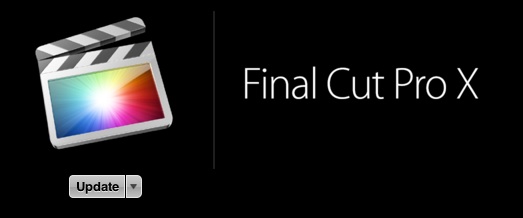
Great news for FCPX users, Apple has updated the popular editing program to version 10.1.2.
There are a lot of new features that address some of the common complaints that many power users had voiced. I am not going into detail on all the new features but I want to look key features that are relevant for people editing news and documentary.
One of the big features is the ability to add a broadcast standard Rec.709 look up table to footage captured in Log from many popular cameras. In real time it works with high-dynamic-range and wide-colour-gamut footage from ARRI, Blackmagic Design, Canon, and Sony cameras.
Here is the way to do this:
1. Select a clip recorded with the log option.
2. To open the Info inspector, click the Inspector button in the toolbar (shown below), and click the Info button at the top of the pane that appears.


3. In the Info inspector, choose Settings View from the Metadata View pop-up menu.
4. In the Log Processing pop-up menu, choose one of the options below for converting the appearance of your footage:
None: Turns off log processing.
ARRI Log C: Applies ARRI Log C linearization with a default tone mapping.
ARRI Log C (3DLUT): Uses the 3DLUT embedded in the media to apply a custom look.
BMD Film: Applies the appropriate linearization for the Blackmagic Cinema Camera and the Blackmagic Pocket Cinema Camera.
BMD Film 4K: Applies the appropriate linearization for the Blackmagic Production Camera 4K.
Canon Log: Applies the appropriate linearization for Canon Log.
Sony S-Log2: Applies the appropriate linearization and 709(800%) MLUT tone mapping for footage shot with the S-Log2/S-Gamut setting on Sony cameras such as the F5 and F55.
Sony S-Log3: Applies the appropriate linearization and 709(800%) MLUT tone mapping for footage shot with the S-Log3/S-Gamut3.Cine setting on Sony cameras such as the F5 and F55.
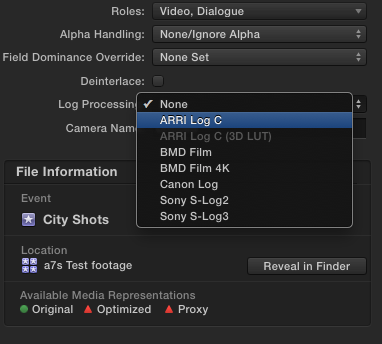
I did a quick test with some of my Sony Slog3 and Slog2 vision and wasn’t impressed by the results. That may well be because I don’t usually use LUT’s when doing colour correction – preferring to build a look myself. Your milage may vary and you may be happier when using the log processing. I will be interested to hear other people’s opinions about this new feature.
A new ProRes flavour – 4444 XQ:
4444 XQ is the latest ProRes codec and it is designed to be extremely efficient yet almost indistinguishable from uncompressed footage. I have used ProRes 4444 in the past and have found it to be a very nice recording codec. ProRes 4444 SQ has data rates approximately 50% higher than regular 4444.
Hopefully we may see 4444 XQ added to many external recorders as well as being made available in the Sony F5/55 as part of the paid ProRes update. Arri have already announced it as part of a new upgrade pack for certain Alexa models. This is how Apple describe it:
Apple ProRes 4444 XQ: The highest-quality version of Apple ProRes for 4:4:4:4 image sources (including alpha channels), with a very high data rate to preserve the detail in high-dynamic-range imagery generated by today’s highest-quality digital image sensors. Apple ProRes 4444 XQ preserves dynamic ranges several times greater than the dynamic range of Rec. 709 imagery—even against the rigors of extreme visual effects processing, in which tone-scale blacks or highlights are stretched significantly. Like standard Apple ProRes 4444, this codec supports up to 12 bits per image channel and up to 16 bits for the alpha channel. Apple ProRes 4444 XQ features a target data rate of approximately 500 Mbps for 4:4:4 sources at 1920 x 1080 and 29.97 fps.
Apple are promoting it as being as close to uncompressed at much lower data rates, and good enough for storing camera original media: 
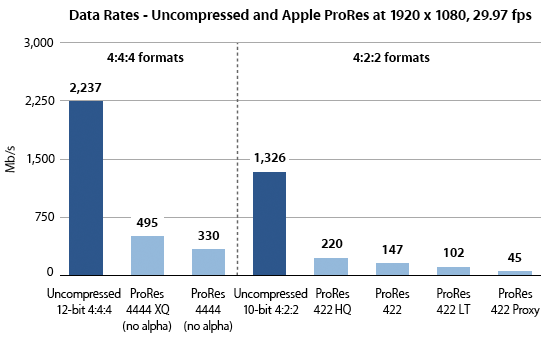
The Apple ProRes 4444 XQ and Apple ProRes 4444 codecs losslessly encode alpha channel values of any bit depth up to and including 16 bits. They can be considered “visually lossless” for encoding the Y’CBCR or RGB pixel values intended for viewing, and “mathematically lossless” for encoding the alpha values that specify compositing. As a result, the degree of quality or fidelity should never be a question for Apple ProRes 4444 alpha channels because the decoded data always matches the original perfectly. XDCAM exports: For news shooters there is the ability to quickly export cuts-only projects containing XDCAM media. This will greatly speed up your delivery of getting XDCAM projects out fast and efficiently.
Vimeo 4K exports:
Another new feature is the ability to upload 4K projects directly to Vimeo from FCPX. While this sounds great it if you play back the file on Vimeo it is still 720 or 1080p. Until Vimeo actually allows 4K file playback it seems to be a pretty useless feature.

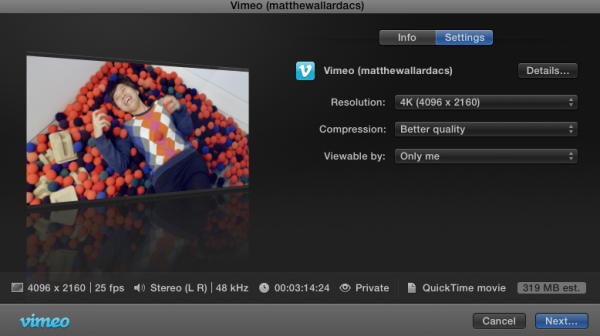
Audio improvements:
There are new volume control options which are long overdue. I still find dealing with audio a little frustrating in FCPX, but I think the new features included in this update should help. They have added a pair of new commands where you can set volume values without having to go into the audio tab of the inspector window.

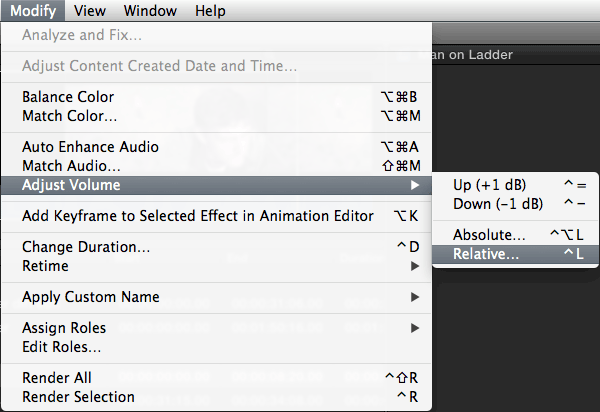
Then, with one or more clips selected, you can change audio volume amounts by typing a number into the timeline:
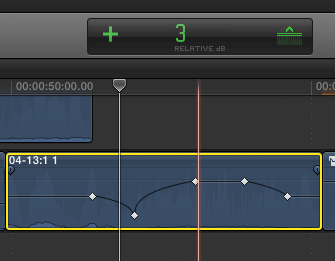
 I found this a great feature to use. You can also now use the range selection tool and adjust the audio of multiple clips at once using this new feature. There is also new live audio recording feature. This includes an automatic countdown and automatic grouping of multiple takes into ‘auditions’, which is a great new function.
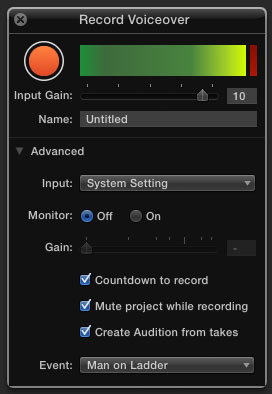

New import options:
There are also new import preferences so you can copy media into a different location depending on where each library is stored. The option given is to follow the library setting or to leave the source clips in place.
Another good organisational feature is the ability to add keywords to clips based on the tags assigned to their source media files in the Finder.
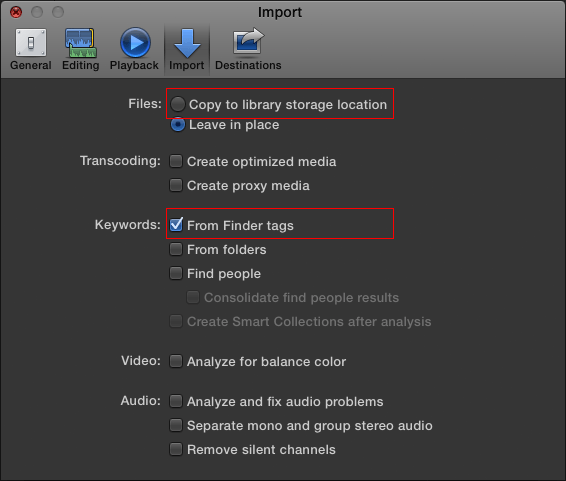
 The other key import feature is the ability to just drag and drop media from the finder straight to the browser window instead of having to import it into a event in a library.
Options to delete:
You can also now delete optimised, proxy, and render files from within Final Cut Pro. This was something that was very frustrating in the past. Not being able to delete material from within FCPX is something I have had a love/hate relationship with. It was good that you couldn’t delete something by accident from within the app, but then when you wanted to permanently delete something you had to go looking for it. At least now they have given you the option. 
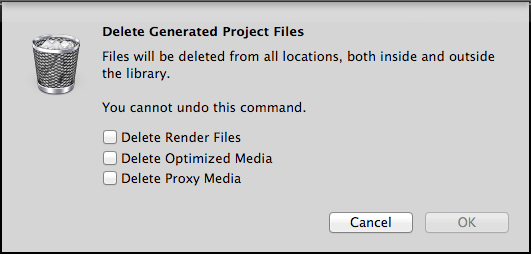
Finally you now have more options when exporting XML files. XML export can now include one or more clips only and one or more projects. Final Cut lists the elements to be included in the export at the bottom of the export dialogue box:
I am constantly impressed with the amount of updates that Apple puts out for FCPX. I think this, with the soon to be released Davinci Resolve 11 featuring even better editing tools, should keep other NLE manufacturers on their toes. While there are still a few small things that I would still like to see improved , the Apple updates continue to improve this already great editing system. I don’t know of a single other editing program that has had as many practical (and free) updates as FCPX. For $299 I find it hard to beat.





